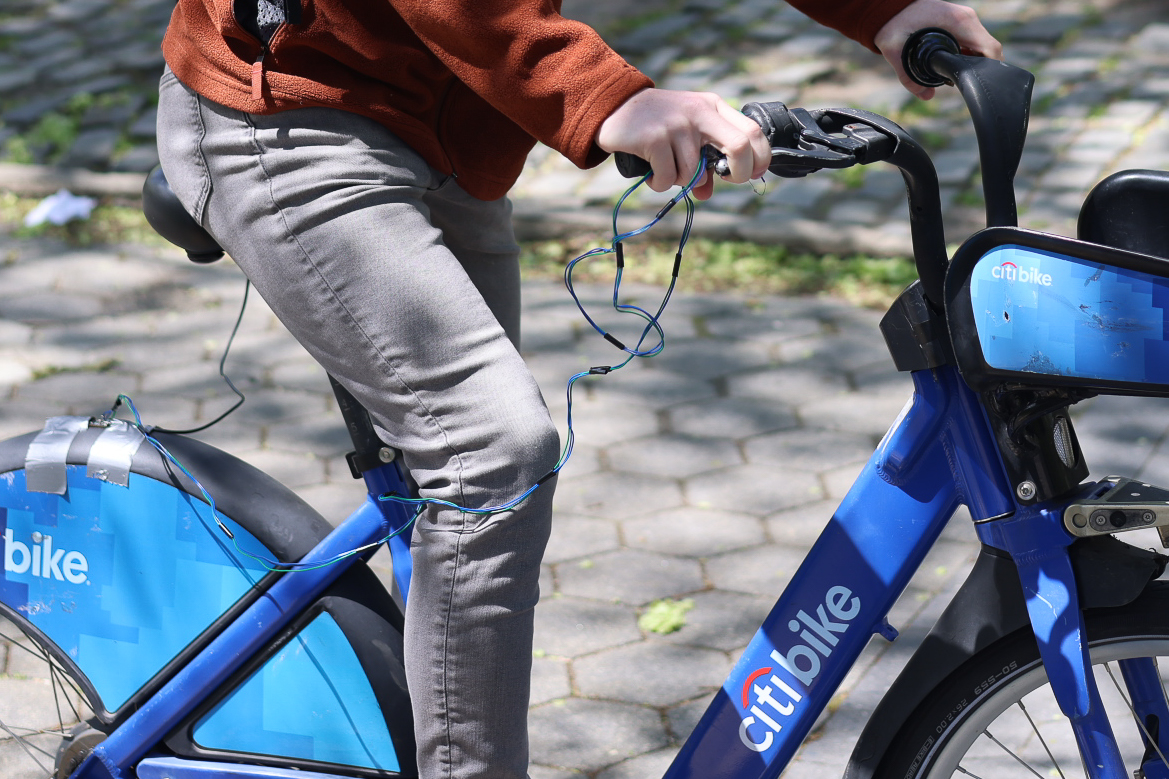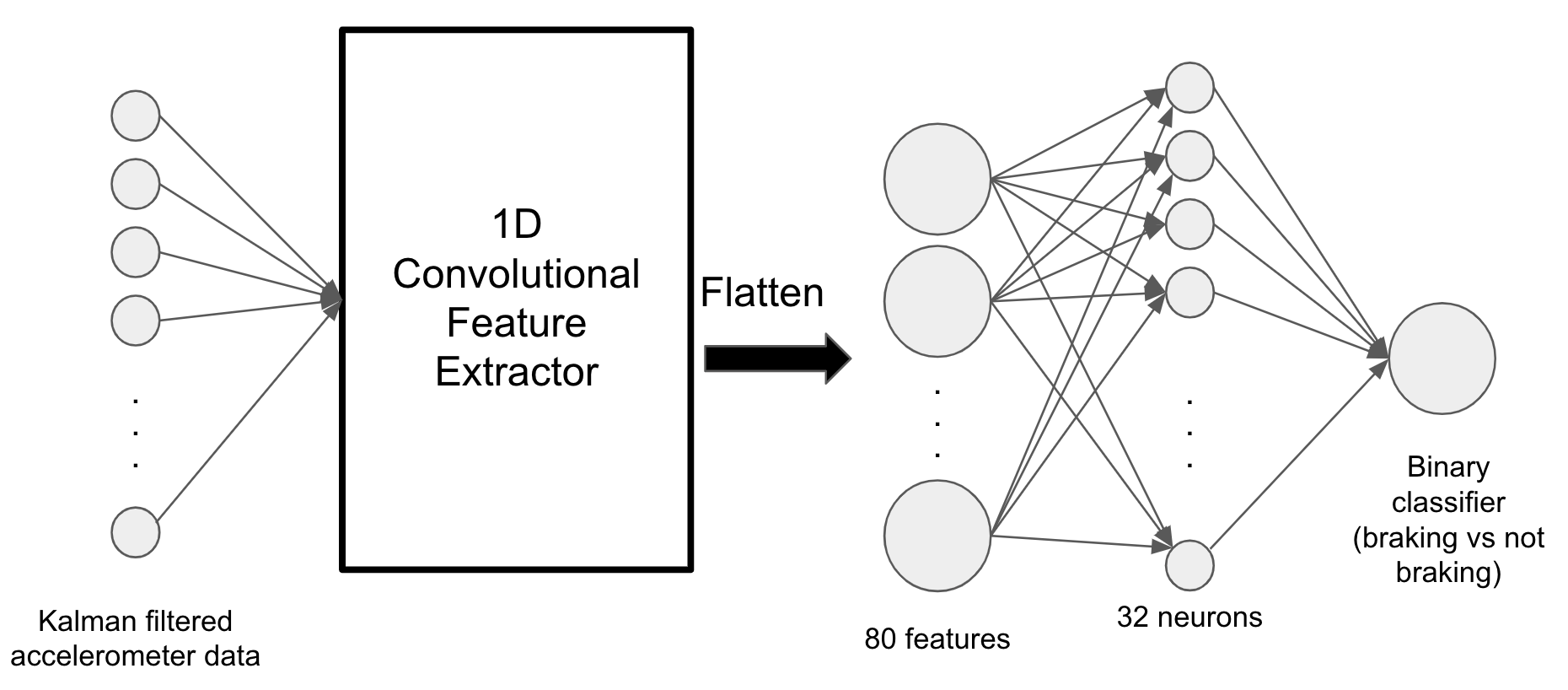Smart Bicycle Taillight

Project Video, Abstract, and Repository
Description:
Abstract: The project introduces a Smart Bicycle Taillight (SBT) designed to enhance cyclist safety. The SBT operates in strobe mode during deceleration and remains solid during coasting or acceleration. A unique feature of this project is the integration of a Kalman filter with a feature extractor and multi-layer perceptron (MLP) for real-time inference on low-power edge devices. The model outperforms other methods, achieving a classification accuracy of 95.6%.

Introduction: Cycling safety is paramount, with over 150 preventable cycling deaths reported monthly. While taillights are a common safety feature, the integration of Deep Learning (DL) in cycling safety remains largely unexplored. This project introduces an SBT that enhances visibility, especially in professional cycling races.
System Design:
Pipeline:
Utilizes Arduino Nano 33 BLE with a built-in accelerometer.
Sensor values are processed through a Kalman filter to reduce noise.
A sliding window captures the last 120 samples for prediction.
Model Design:
The system integrates a Kalman-filtered accelerometer data into a 1-D convolutional feature extractor.
The model is lightweight, ensuring low computational cost and high performance.

Data Acquisition:
Data Collection:
Data was manually collected using a photo-resistor circuit.
The system deployed on a bicycle differentiates between coasting/accelerating and braking based on the photo-resistor's resistance.
Data Cleaning:
Erroneous labels were adjusted, and valid sequences were detected based on sequence length.
Synchronization between Arduino's recordings and video recordings ensured accurate data.
Data Post Processing:
Gravitational pull adjustments were made to the accelerometer data.
Kalman filters were used to filter out environmental noise.
Results: The model was evaluated in a controlled setting, demonstrating high accuracy in brake episode classification. Our model significantly outperforms other methods, beating the best-thresholded method by 26.5% on the same dataset, and achieving a test accuracy of 95.6%
Conclusion: The developed SBT has shown promising results in detecting brakes made by cyclists. With further testing and data collection, the SBT has the potential to be introduced to the consumer market, enhancing safety for all cyclists